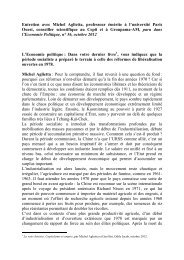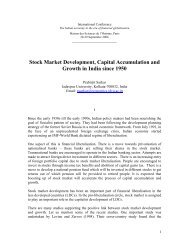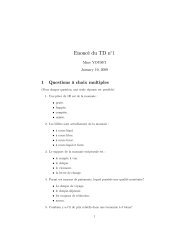Does the Entry Mode of Foreign Banks Matter for Bank ... - EconomiX
Does the Entry Mode of Foreign Banks Matter for Bank ... - EconomiX
Does the Entry Mode of Foreign Banks Matter for Bank ... - EconomiX
You also want an ePaper? Increase the reach of your titles
YUMPU automatically turns print PDFs into web optimized ePapers that Google loves.
multinationals and Hungarian monopolies (Majnoni et al., 2003). Citibank, ING, andABN AMRO first follow <strong>the</strong>ir clients into <strong>the</strong>se countries, and <strong>the</strong>n after <strong>the</strong> setting-upphase, <strong>the</strong>y have tended to develop <strong>the</strong>ir services using a local customer base andcompete directly with domestic banks (Konopielko, 1999).Ano<strong>the</strong>r motive was simply to secure presence in view <strong>of</strong> possible futureexpansion. This "wait-and-see" approach is followed, <strong>for</strong> instance, by Deutsche <strong>Bank</strong> inHungary (Majnoni et al., 2003).We also note that some reasons specific to CEE countries may explain <strong>the</strong> entry<strong>of</strong> M&A banks. For instance, in Poland, a number <strong>of</strong> <strong>for</strong>eign banks may have accepted totake over certain Polish banks in trouble simply to "buy" a license to operate in thismarket. They were not really interested in <strong>the</strong>se banks, and <strong>the</strong>re<strong>for</strong>e did not effectivelyengage in restructuring and management <strong>of</strong> <strong>the</strong>se unsuccessful banks. As an example, inDecember 1994, Westdeutsche Landesbank agreed to buy 29% <strong>of</strong> <strong>the</strong> new issue <strong>of</strong> sharesin <strong>Bank</strong> Morski in exchange <strong>for</strong> a license granted by <strong>the</strong> NBP in February 1995. Asimilar procedure was subsequently applied to o<strong>the</strong>r German banks. In return <strong>for</strong> alicense, <strong>the</strong>y were <strong>for</strong>ced ei<strong>the</strong>r to support banks in trouble or to take over <strong>the</strong> `remainder’<strong>of</strong> almost bankrupt Polish banks (Konopielko, 1999). Never<strong>the</strong>less, in some cases, <strong>the</strong>reasons <strong>for</strong> entry <strong>of</strong> M&As may not be altoge<strong>the</strong>r clear. As Abarbanell & Bonin (1997, p.48) point out referring to <strong>the</strong> case <strong>of</strong> ING acquiring <strong>Bank</strong> Slaski in Poland: "Whe<strong>the</strong>rING’s decision to take a majority stake in <strong>the</strong> bank was motivated by a desire to exercisetighter control over policy and strategy is not known…”.<strong>Mode</strong>s <strong>of</strong> <strong>Entry</strong>Both modes <strong>of</strong> entry, i.e. Greenfield investment and Merger and Acquisition, characterize<strong>the</strong> CEE markets and such entry followed two separate waves. First, <strong>the</strong> trans<strong>for</strong>mation <strong>of</strong><strong>the</strong> mono-bank system into a two-tier one has led to <strong>the</strong> first wave <strong>of</strong> entry by Greenfieldbanks. Later on, a privatization process was started in <strong>the</strong>se countries, which createdopportunities <strong>for</strong> <strong>for</strong>eign banks to acquire domestic banks, leading to a second wave <strong>of</strong>entry by Merger and Acquisition banks.With respect to <strong>the</strong> <strong>for</strong>ms <strong>of</strong> entry, according to (Konopielko, 1999), <strong>the</strong> mostappealing vehicle <strong>of</strong> entry is through setting up a subsidiary, ei<strong>the</strong>r from scratch or-13-




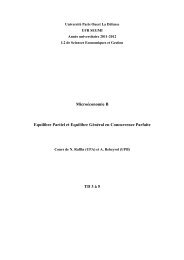

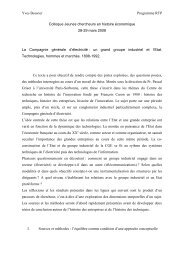

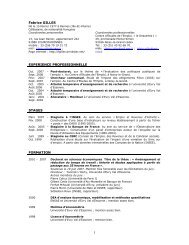
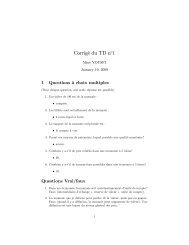
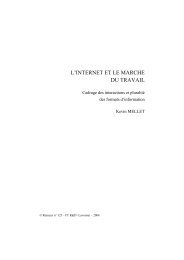
![P * 1 JTZWL_TZY OP^ Sd[Z_Sl^P^ !=m_m]Z^NmOL ... - EconomiX](https://img.yumpu.com/42226403/1/190x143/p-1-jtzwl-tzy-op-sdz-slp-m-mznmol-economix.jpg?quality=85)
